Seville Holidays: Things to do in Seville
The often-sundrenched capital of Andalusia is a mecca for lovers of ancient architecture, Renaissance art - and flamenco.
Most Seville holiday makers will be drawn to the many historic sites in Seville's old town, but there are joys to be had in the surrounding neighbourhoods, too - notably Triana with its traditional food market and more earthy, working-class atmosphere.
Aside from exploring the city's churches, ruins and art galleries, the pleasure of Seville also lies in tapas and a cold beer in a sunny plaza, people-watching in a buzzing nightspot, or visiting one of the many flamenco clubs.
Indeed, few do 'fun' like the Sevillians - as evidenced by the city's two main festivals: Semana Santa and Feria de Abril.
Here you'll discover some of the best things to do in Seville.
Where is Seville?
Seville is located in the south of Spain, under three hours' drive from coastal resort cities such as Marbella and Malaga.
The fourth largest city in Spain, Seville is home to 1.3 million people.
If you're enjoying a beach break down on the Costa del Sol or Costa de la Luz, it's worth pencilling in time for this historic city.
2-3 days should be enough to see the main attractions of Seville.
With so much architecture, food and culture, you'll never be at a loss for what to do in Seville.
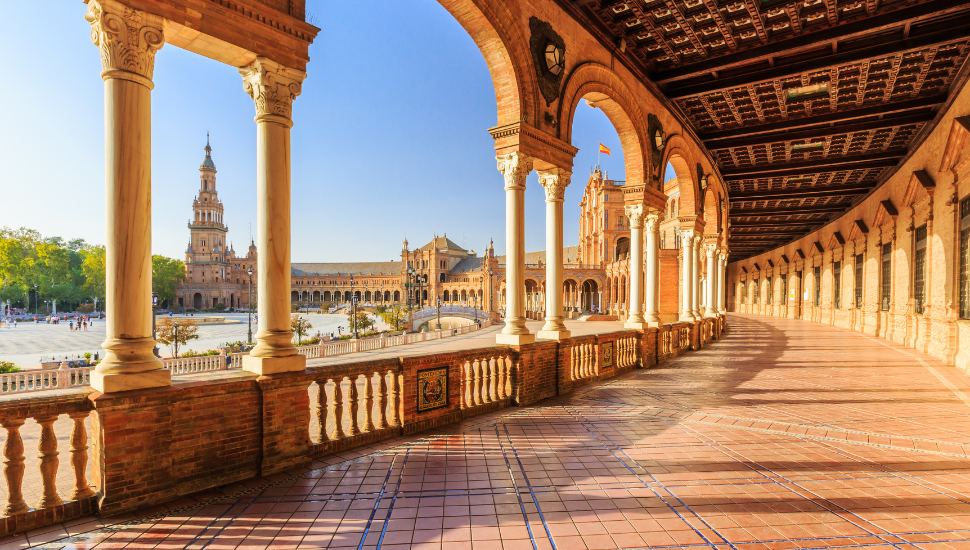
Plaza de Espana
The heart of Seville is occupied by Plaza de Espana, a majestic crescent-shaped building famed for its columns and beautiful tiling.
Built a century ago, it features 48 alcoves, each inspired by a Spanish province.
Here you can rest in the shade and marvel at the detailed artwork depicting scenes from old Spain.
Further respite from the sun is provided by the mighty central fountain, from which emanates a cooling mist.
A waterway arcs in front of the building, where you can rent a rowing boat for 6 euros per 35 minutes.
Four bridges link the two banks, each representing an ancient kingdom of Spain.
If you're lucky, you might catch a free flamenco dance. You can also take a trip in a horse drawn carriage, which also costs around 6 euros for 35 minutes.
Plaza de Espana has been used as a backdrop in several films, notably Star Wars Episode II (doubling as the doomed Planet of Naboo) and Lawrence of Arabia (in which it played itself).
If you're feeling peckish before or after your visit to the Plaza, drop into L'Orangerie Desayunos and Tapas, located a few blocks south.
Here you'll find a tantalising range of typical Spanish items, including tostada (toast). But Spanish toast is no ordinary toast - it comes with a choice of toppings including jamon (ham) and the classic tomato puree.
Tapas, cod and ham hock, and tiramisu are also well reviewed, as is the fast and friendly service. If you didn’t know already, food plays a central role in Spanish life, so you’ll always have an opportunity for a quick and tasty bite.
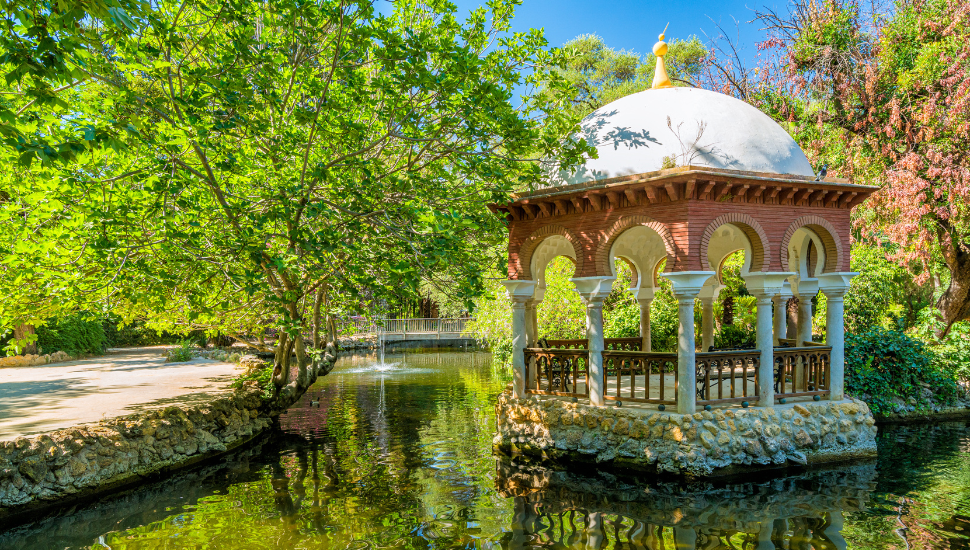
Parque de Maria Luisa
One of the prettiest parks in Spain - possibly the world - Parque de Maria Luisa comprises a network of tree-lined pathways, colourful flowers, and delightful duck ponds and fountains.
It's a great place to enjoy some peace and quiet after your visit to Plaza de Espana, which is right next door.
Stretching along the Guadalquivir River, Maria Luisa is Seville's main park.
Its current form - in the "Moorish paradisiacal style" - was the brainchild of architect Aníbal Gonzalez, who began designing the park in 1914, so it could play a role in the Ibero-American Exposition of 1929.
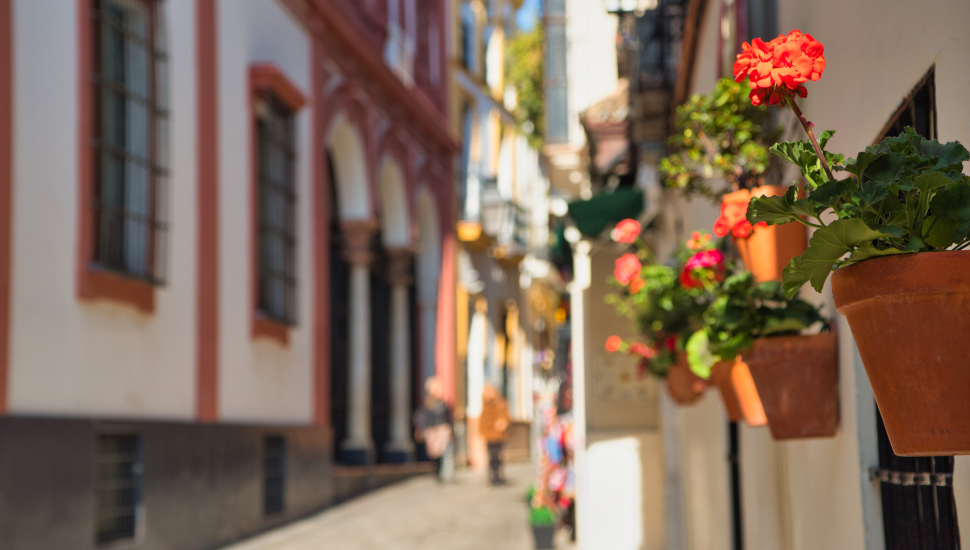
Santa Cruz - Old Jewish Quarter
A vibrant, labyrinthine neighbourhood packed with tapas bars and shops, Santa Cruz is the perfect place to enjoy the chilled-out Spanish lifestyle, and when nightfalls, a little of "la vida loca".
Thanks to its narrow alleys, it offers protection from the often-blazing sun, so you can hop between cafes and bars to your heart's content.
A highlight is Callejon del Agua - or water alley. Pipes in the wall once supplied water to the Alcazar Gardens.
At the alley's end you'll find a villa with a vast, picturesque balcony, which is thought to have inspired the opera Barber of Seville.
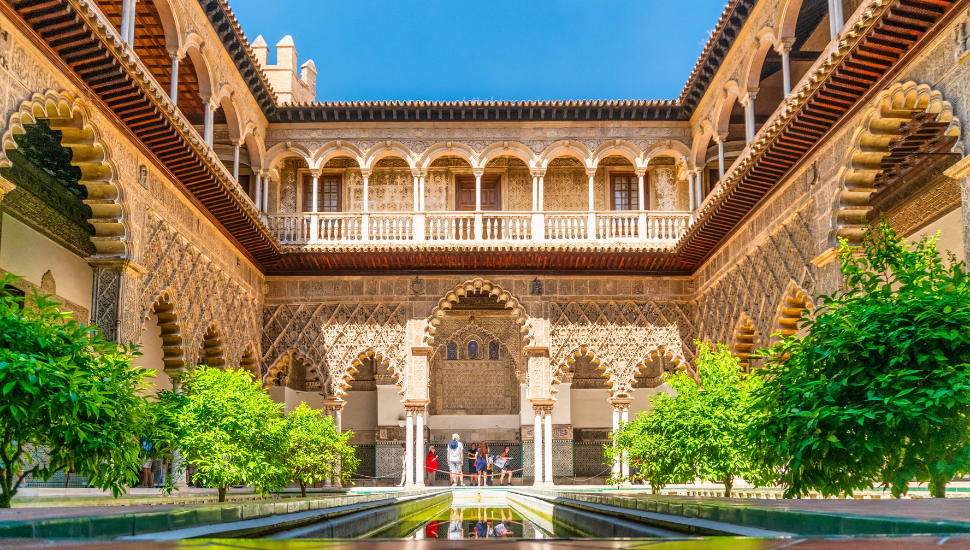
Real Alcazar
The UNESCO-listed Royal Alcazar of Seville (Reales Alcázares de Sevilla) was built in the 1100s and has been a royal palace for much of that time.
It has undergone many transformations, with the current incarnation featuring mostly Renaissance and Baroque elements, and many beautiful tile decorations.
As one of the most popular tourist destinations in Seville, you'll need to book your tickets well in advance to avoid the lengthy queues.
The entry fee of 14.50 euros for adults is worth every euro-cent; you could spend hours exploring the stunning courtyards and gardens, which are patrolled by stunning - and rather vocal - royal peacocks.
The Real Alcazar is the oldest active royal palace in Europe, and doubled as the Water Gardens of Dorne in Games of Thrones, further cementing Seville's reputation as a top movie production location.
The Real Alcazar is among the main things to do on a Seville holiday.
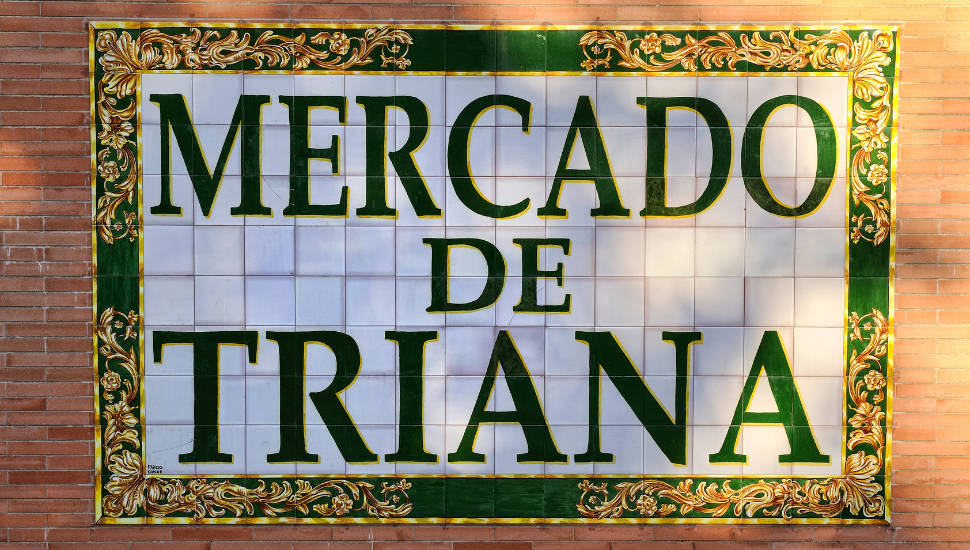
Triana
The characterful and laid-back Triana district is where many a famous bullfighter, flamenco dancer and potter were born.
The area feels far less touristy than the streets around Plaza de Espana - where you can get a more authentic taste of normal Spanish life.
Enter Triana by crossing the Puente de Isabel II - the oldest iron bridge in Spain.
On your left you'll find Triana market, where you can peruse a dazzling array of fresh produce.
While it officially closes at 5pm, most stalls have vanished by midday - so aim to arrive early.
A handful of restaurants are located here, giving you the opportunity to sample some of the tasty comestibles.
A short walk from Triana Market is Centro Cermaica Triana, a former ceramic factory where you can learn about the mosaiced history of tiling manufacturers in the district.
See fabulous ceramics, including ornate vases, colourful tiles and even ceramic advertising from decades ago.
Entry is just 2 euros, but you can get in for free if you show your Real Alcazar ticket - so don't throw it away!
Nearby is Castillo de San Jorge - also included in your Real Alcazar ticket - which dates from the Middle Ages and was the seat of the Inquisition for almost 300 years. The castle was demolished in the 19th century and then rebuilt - so it's far from the oldest building you'll see on your trip to Seville (but still very much worth a visit).
Outside, you can stroll down the Alley of Inquisition, formerly part of the castle.
Prisoners of the Inquisition were led down here to be judged in court. While the Inquisition convicted some 150,000 people for non-Catholic or outright heretic behaviour, most guilty judgments did not result in death.
The riverside Calle Betis is a great spot to enjoy a drink and snack in one of the many bars and restaurants.
Move further up the river, then cross the next bridge to visit Torre del Oro, a military observation tower complete with naval museum. The 3 euro entry price gets you grand views of the river.
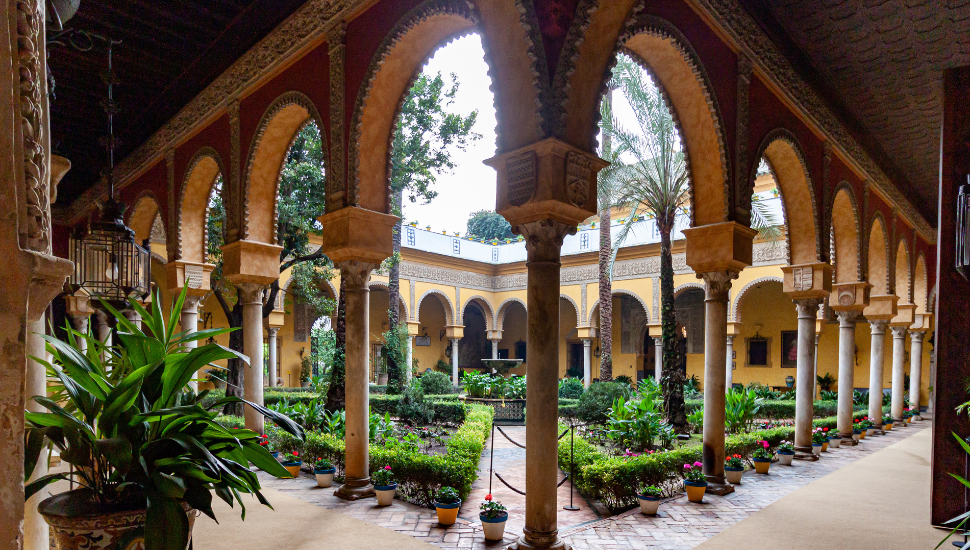
Palacio de las Duenas
Located in Seville’s old town, the 15th-century Palacio de las Duenas is an intriguing mix of Gothic and Mudejar architectural styles, and was the home of Duchess de Alba - one of Spain's most famous aristocrats.
The 12-euro entry cost enables you to enjoy the spectacular palace facade and pretty gardens.
While the tapestries and artefacts inside are absorbing, many visitors find the beautiful gardens are the real highlight.
With citrus trees, flowers, water features - it’s the perfect place to rest your weary feet after a day of sightseeing.
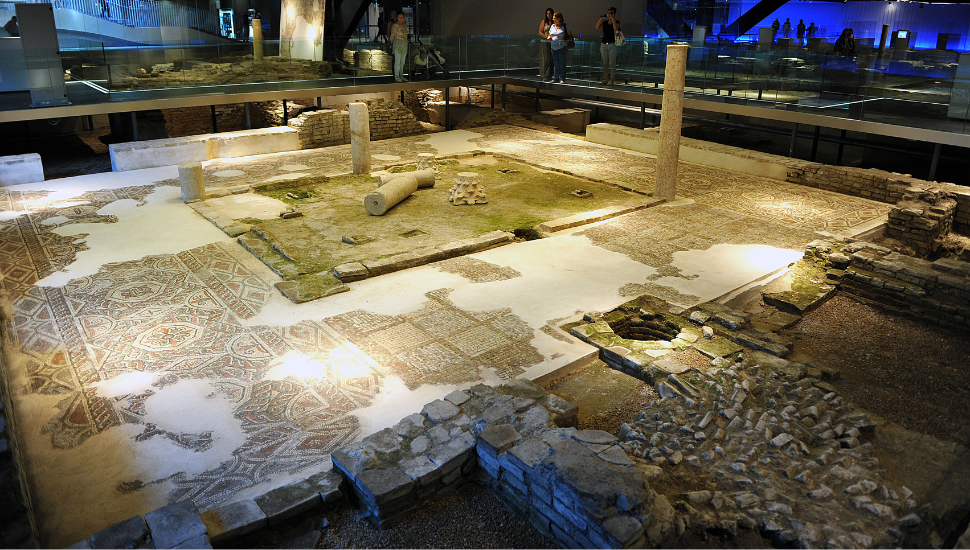
Credit: joserpizarro - stock.adobe.com
Antiquarium and La Setas
La Setas (Metropol Parasol) is a large lattice structure with a flamboyant modern architectural style.
During its construction a treasure trove of Roman and Moorish ruins were discovered, which are now housed in an architectural museum underneath the Parasol.
While doubtless an unexpected hitch for the Parasol's developers, it created another fabulous attraction for tourists.
The Antiquarium also includes the Real Alcazar ticket, and showcases the walls of ancient homes, wells and stunning Roman mosaic floors, which are viewed through a network of glass floor walkways.
Afterwards, ascend La Setas for great views over the city. It claims to be the largest wooden structure in the world, and is explored via snaking walkways.
A night time visit to La Setas includes a stunning lightshow, but does cost a little more than a daytime visit (10 euros compared to 3 euros).
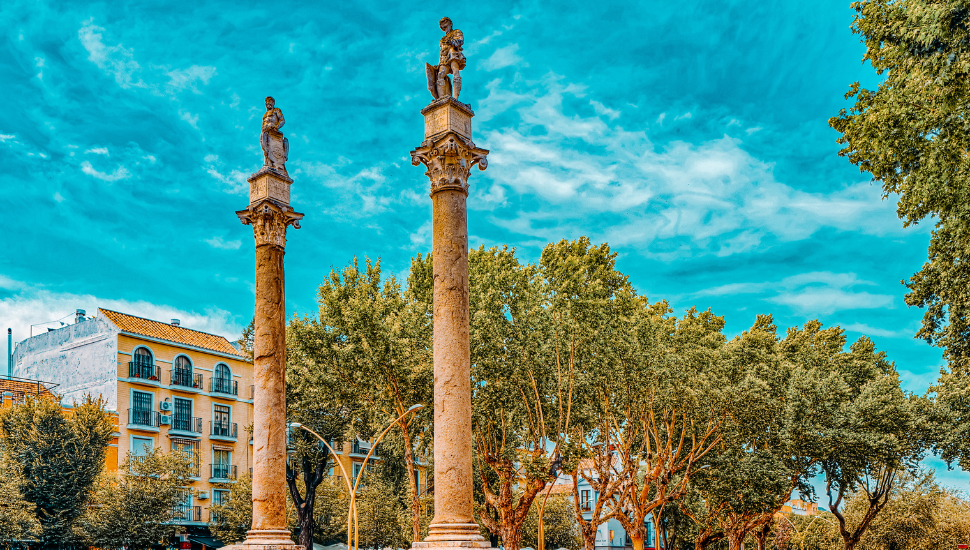
Alameda de Hercules
This popular tree-lined plaza is centred on the Roman Hercules Columns - and is the main nightlife area of Seville.
A diverse selection of restaurants, bars and nightspots make this a must-visit destination - at least for an evening.
Seville Museum of Fine Arts
This collection of important Spanish religious art won't be everyone's cup of tea, but the sheer amount of paintings and artefacts is certainly impressive.
Aside from priceless works by Murillo, Velásquez and Zurbarán, the architecture of the museum (a converted convent) will also delight.
The Bullring: Real Maestranza de Caballería de Sevilla
If perusing thousands of religious paintings is not to everyone’s taste, it’s doubly true of the Seville bullring. But whatever your take on this controversial sport, there's no denying the beauty of the bullring itself. What's more, you can tour it without having to watch a bullfight.
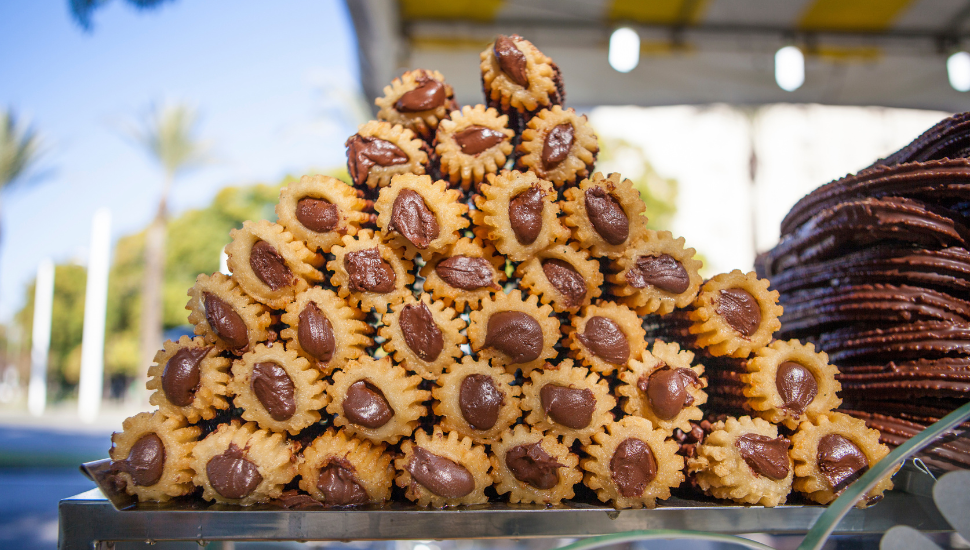
Bar El Comercio (churros and hot chocolate)
If you've never sampled Spain's famous churros before, pop into Bar El Comercio for a sweet and filling breakfast. These deep-fried strips of dough are dipped in mugs of warm melted chocolate, and will fuel you for a day of sightseeing.
Also great for an afternoon beer, served ice cold in old pottery mugs.
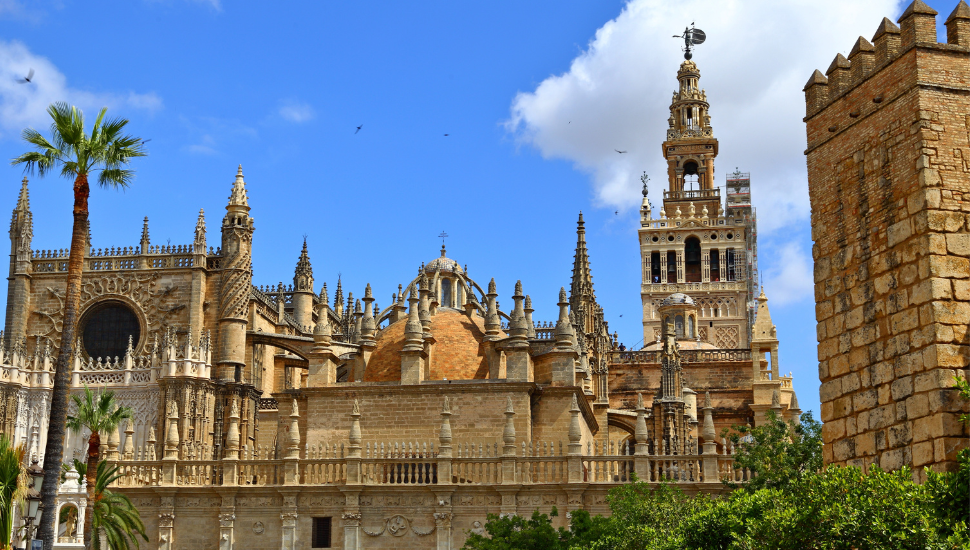
Seville Cathedral
The largest Gothic cathedral in the world, Seville Cathedral took more than a century to build and houses over 80 chapels.
Among the many mesmerising highlights of this vast structure are the gilt altarpiece and the tomb of Christopher Columbus. Entry: 10 euros.
Al Giralda, the cathedral's bell tower, was once part of the Great Mosque of Seville, before being converted to the Cathlic faith. You can reach the top by ascending a series of inclining ramps - built so the sultan could ride his horse up. Ideal for those among us who dislike stairs.
90-minute rooftop tours are also available for 20 euros. It gives you a chance to take in the fabulous views over the historic centre of Seville, but it also affords high-up interior views of the cathedral.
Since these tours are popular and spaces are limited, you'll need to book in advance.
With only a few set times for tours, you'll need to be somewhat flexible with your visiting time.
Whether you take a rooftop tour or not, this stunning cathedral is likely to be a highlight of your Seville holiday experience.
Iglesias Colegial del Divino Salvador
Another former mosque that was converted to Catholicism in the most glorious way is the Iglesias Colegial del Divino Salvador.
Painted in vivid pink, it boasts an ornate altar and stained-glass windows.
Outside on the buzzing Plaza del Salvador you can enjoy a coffee break and admire the many artworks for sale by local painters.
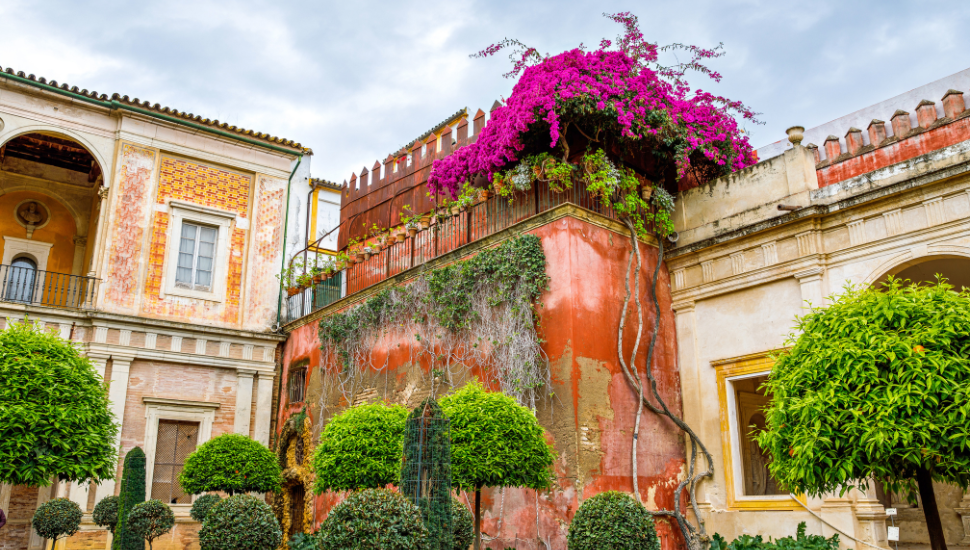
Casa de Pilatos
While you may feel a little overwhelmed by palaces and churches by this point, Casa de Pilatos is one of the most rewarding things to do in Seville.
This stunning 16th-century palace was built on the order of Don Pedro Enriquez, and named after Pontius Pilate. Enriquez was inspired to name the palace after the Roman governor of Judea after a pilgrimage to Jerusalem.
Fusing Italian Renaissance, Mudejar and Gothic styles, this awe-inspiring building features a courtyard edged by marble statues facing an ancient fountain.
Numerous busts of Roman emperors and Spanish kings are found throughout.
Beautiful tiled rooms and serene gardens make this a must-visit item to put on your Seville holiday itinerary.
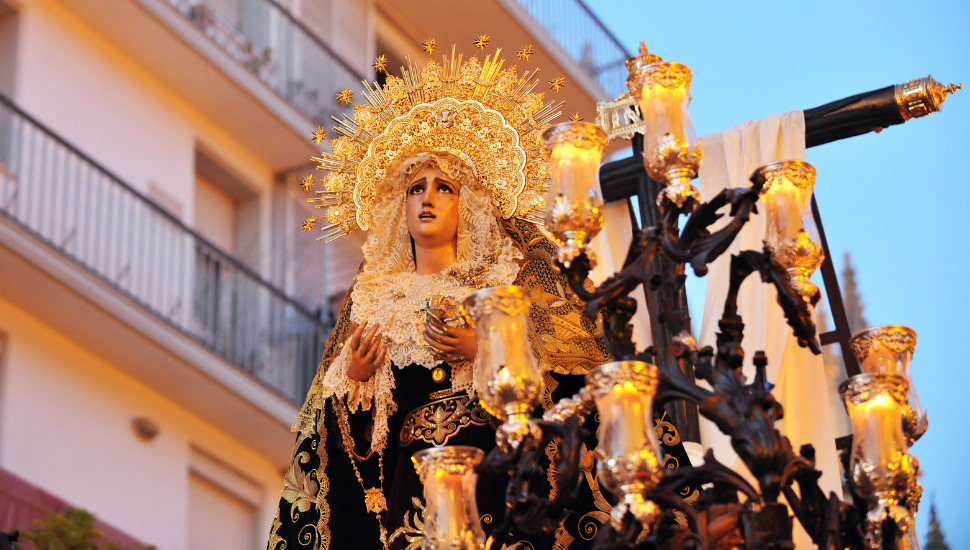
Semana Santa (just before Easter)
Seville hosts one of the most famous Semana Santa festivals, which are held across Spain in the run-up to Easter.
Religious brotherhoods, with their iconic white headgear, perform penance processions through the streets of the city. Colourful, elaborate floats on which perch 17th-century images of the Virgin or Christ, follow these processions.
While it's completely different to more chaotic and adrenaline-based Spanish festivals - such as the ‘running of the bulls’ or the Pamplona tomato festival - there's a palpable sense of excitement and energy to Semana Santa - especially in Seville.
Be aware hotel accommodation gets booked up quickly during this festival, and prices are very high - especially around the cathedral.
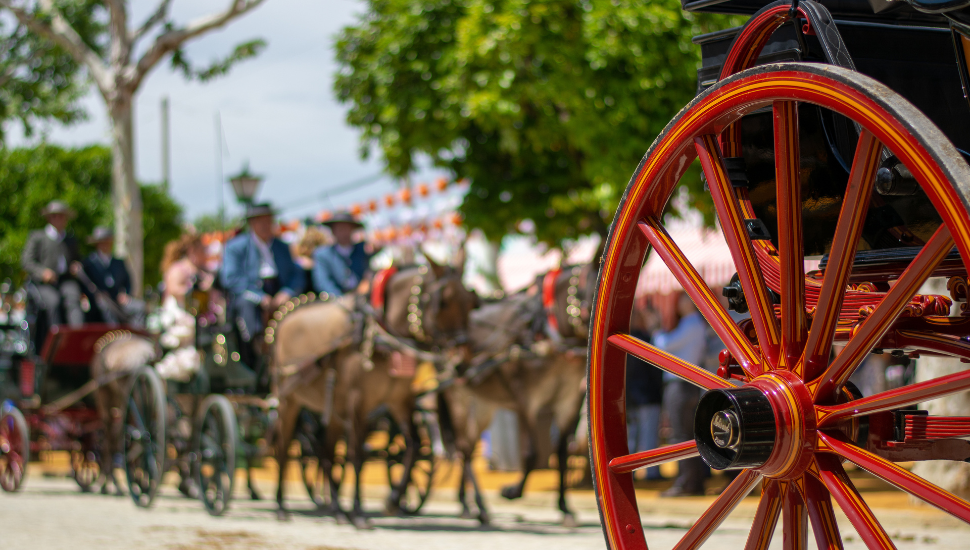
Feria de Abril
Seville's April Fair - Feria de Abril - is considerably more hedonistic than Semana Santa, where locals and visitors drink, eat, dance, and socialise.
There's also plenty of flamenco and bullfighting to be experienced - although the latter is not to everyone's taste.
Starting out as a cattle trading fair in 1847, the Feria de Abril has become internationally known as one of Spain's most flamboyant and fun-centric fiestas.
Many locals wear traditional clothes during the festival. Men don a traje corto (short jacket, tight trousers and boots) together with a 'cordobes' hat. Women often wear traditional flamenco dresses called traje de gitana or faralaes.
Traditional Spanish food is consumed throughout the festival, notably calamares con salsa ali-oli (fried squid with garlic sauce), fried prawns, red mullet, clams and Jamón (Spanish ham).
As with Semana Santa, hotel rooms are hard-to-find and costly during this period - so do book early, or alternatively avoid the festival if you're simply looking to explore the attractions of Seville.
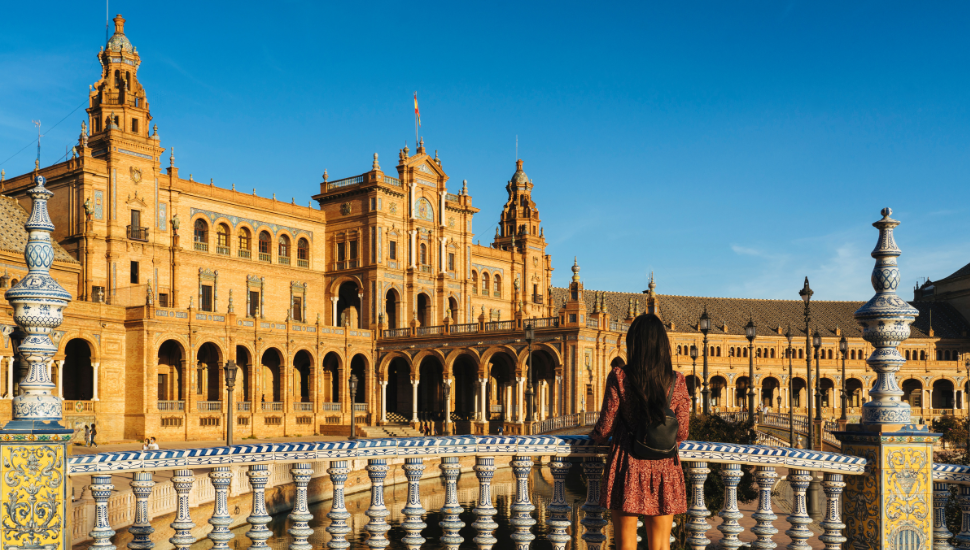
How to reach Seville
Airlines run many non-stop flights from the UK to Seville, with regular departures from Glasgow, Edinburgh, Manchester, Belfast and London (which has up to 10 flights a day).
If you're already in Spain, the nation's excellent and inexpensive train system connects Seville to dozens of towns and cities. It takes just over two hours to Seville from the coastal city of Malaga, and 2.5 hours from Madrid.
You might also consider renting a car, or trying a car share app such as BlaBlaCar. Carpooling is popular in Spain and could be considerably cheaper than going by train.
Get a Quote